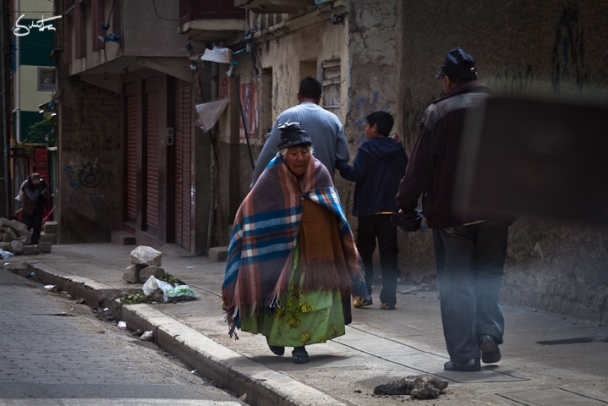Czy wiedzieliscie, że najstarszy człowiek na świecie mieszka w Boliwii? Ja dowiedzialam sie o tym dzisiaj, z przypadkowo napotkanej informacji w boliwijskim dzienniku ‘El Deber’.
Dziennik podaje, iz Carmelo Flores Laura, z pochodzenia Aymara, ma 123 lata i według Rejestru Cywilnego, jego dokumenty są ważne. Niesamowite, prawda?
Fot: ‘El Deber’ AFP: Carmelo Flores zostanie uznany za żywe dziedzictwo narodowe.
Tak naprawde, wiedząc z autopsji jak chaotyczne są urzędy publiczne w Boliwii, sama podchodze do tej sensacyjnej wiadomosci z rezerwa. Jezeli jednak okazalaby sie prawdziwa, señor Flores bylby najdłużej żyjącą osobą w historii (tej udokumentowanej).
Carmelo Flores żyje w Andyjskiej wsi Frasquía, około 150 km od La Paz, w lepiance. Od trzech lat ma energię elektryczną i latryne, ale jak sam przyznaje, nie jest przyzwyczajony do korzystania z nowoczesnych wynalazkow.
Caly czas chodzi po gorach, bez pomocy laski, pije wodę z gorskich strumieni i zuje liscie koki! Jaki jest jego sekret długowieczności? Gazeta cytuje:
“Chodzę tak po prostu sam, ze zwierzetami (po gorach). Nigdy nie jadlem makaronu czy ryżu, tylko zboza (lub quinoa/przyp.aut.), ziemniaki i fasole, ktore uprawialem; ale teraz jem wszystko”.
Czasami señor Flores cierpi na bóle głowy i brzucha, zwłaszcza po zjedzeniu makaronu. Pamięta, iz korzystal z porady lekarza tylko w młodości.
Ta historia z cala pewnoscia zmobilizuje mnie do dluzszych spacerow (jezeli tylko nadazy sie taka okazja to w gorach), jedzenia quinoa oraz picia duzej ilosci wody (niekoniecznie ze strumyka), w postaci herbatki z lisci koki ).
Zrodlo: ‘El Deber’
Did you know that the oldest man in the world lives in Bolivia? I didn’t, until today when I read that news in Bolivian newspaper ‘El Deber’.
Carmelo Flores Laura, of Aymara origin, is 123 years old and according to Bolivian Civil Registry, his documents are valid. Wow, amazing, isn’t it?
To be honest, knowing how disorganized are Bolivian public offices, I wouldn’t get too excited about that news, but if it’s true, Señor Flores would be the longest living person that was ever registered in the history.
Carmelo Flores lives in a village Frasquía in the Andes, about 150 km from La Paz, in a mud hut. He has had an electricity and latrine since 3 years, but he is not accustomed to use it.
He still walks in a mountains without a stick, drinks water from the streams and chews coca leaves! What is his secret of longevity? The newspaper quotes:
“I walk just like that, alone with the animals (up the hill). I had never ate noodles or rice, only cereals (as quinoa/aut.), potato and beans, that I cultivated; but now I eat everything’.
Sometimes señor Flores has a headache and stomachache, especially after eating pasta, but he remembers going to a doctor only in his youth.
This story for sure will mobilize me to go on longer walks (in the mountains, if only possible), eat more quinoa and drink more water (not necessarily from a stream) and coca tea:)
Source: ‘El Deber’.
![sr65[1]](http://boliviainmyeyes.files.wordpress.com/2013/08/sr6511.jpg?w=529&resize=529%2C544)
![viejo2[1]](http://boliviainmyeyes.files.wordpress.com/2013/08/viejo21.jpg?w=529&resize=529%2C284)
























































